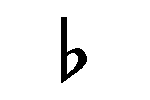Judging Categories | Resonance | Vocal
Glossary | Vowels | Close Window
Are you talkin' to me?
When your director is working with the chorus and he says things like: triplet, glottal stroke, migration, or decrescendo, do you know what he is saying? It's important. If it weren't he wouldn't be saying it. We all spend such little time in front of our chorus directors and quartet coaches that every moment becomes extremely valuable. We owe it to ourselves, our fellow chorus members, directors and coaches and, above all, our listeners to optimize that experience the best way we know how. This will provide the shortest possible path to an optimum performance. With a little work on our own time alone, away from the rest of the chorus, we can optimize that time even further! One easy way is to get to know and speak the same language.
Here you will learn the language of music and singing from A to Z. Take these words with you and share them with your singing friends and you will better understand and communicate the language of song!
- A Cappella: (It., ah kah~PEL~lah): Without accompaniment.
- Accidentals: Sharps, double-sharps, flats, double flats or natural signs used to raise, lower, or return a note to its normal pitch. Their effect lasts through the remainder of the same measure.
| SYMBOL |
NAME |
EFFECT |
 |
Sharp |
Raises a note one half step. |
 |
Double-sharp |
Raises a note two half steps. |
 |
Flat |
Lowers a note one half step. |
 |
Double-flat |
Lowers a note two half steps. Notice that the flats touch, forming one symbol. |
 |
Natural |
Cancels any of the above, whether indicated in the key signature or as an accidental. |
- Arrangement: An adaptation of a composition for a medium other than that which it was originally written.
- Articulators: The lips, tongue, and jaw, which enable us to produce clearly defined word sounds.
- Back Beat: A popular style of drumming where the second and fourth beats of a measure are emphasized.
- Ballad 1: A song that tells a story. 2: A slow sentimental song. 3: Originally a song accompanying dancing.
- Bar: A measure.
- Bar line: A vertical line that divides measures or bars.
- Chromatic: The adjective used in connection with the chromatic scale or instruments that can produce all, or nearly all the pitches. The chromatic scale consists of 12 tones, each 1/2 tone higher, ascending, or 1/2 tone lower, descending.
- Circle of Fifths: The circular, clockwise arrangement of the twelve keys in an order of ascending, tempered fifths. One reaches the initial key after twelve such steps.
- Crescendo (It. kreh~SHEN~doh): Gradually becoming louder.
- Dissonant: The absence of consonance characterized by a rough sound resulting from the beats produced by two or more tones whose frequencies do not relate.
- Dynamics: Varying degrees of volume.
- Ensemble (Fr., on~SOM~ble): Any group of musicians or singers performing together.
- Expanded Sound: The effect resulting from the combined interaction of voices singing with accurate intonation, with uniform word sounds in good quality, with proper volume relationships that reinforce the more compatible harmonics and combination tones, and with precision, all producing an effect greater than the sum of the individual voices.
- Falsetto (It., fahl~SET~toh): A method used by male singers to extend their vocal range above the normal range.
- Flat: 1. The symbol shown above that indicates a note to be lowered on half step. 2. When a pitch is lower than normal, i.e., out of tune.
- Glissando: Moving smoothly from one tone to another tone, continuously changing pitch.
- Head Voice: The higher register of a voice.
- Intonation: The degree to which the tonal center appropriate to any point in a song remains invariant. It is also the degree of maintenance of consonant interval relationships between the harmony parts and the projected melodic line.
- Just Intonation: A system of tuning where all intervals are derived from the pure fifth and the pure third, as opposed to temperament.
- Key: The tonal center of a composition.
- Lyric 1: The words or text of a popular song. 2: In a singing or expressive style.
- Major Scale: A scale made up of two whole steps, one half step, three whole steps and one half step, in that order.
- Medley: An arrangement that links together two or more popular songs.
- Measure: The notes and rests between two barlines.
- Nuance: Subtle changes in musical expression including dynamics, phrasing and tempo.
- Overtones: Harmonics of second order or higher. It is usual to refer to the first overtone as the second harmonic, the second overtone as the third harmonic, etc. All musical instruments produce composite tones, consisting of many pure tones, called harmonics, or overtones.
- Phrasing: The shape of a melodic line.
- Quartet 1: A composition for four performers. 2: An ensemble of four performers.
- Range: The notes that a voice is capable of creating, from the lowest to the highest.
- Register: A part of the range of a voice that is different from the other parts.
- Scooping: Starting a tone off (usually below) pitch and adjusting to the correct pitch after initiation of the sound.
- Sforzando (It., sfor~TSAHN~doh): A sudden, strong accent abbreviated sf or sfz.
- Sharp 1: The symbol (shown above) that indicates to raise a pitch one help step higher. 2: A pitch played or sung that is slightly higher than normal.
- Soft Palate: The soft palate (platum molle) is the muscular and tendonous extension of the roof of the mouth.
- Song: A composition for voice with text or lyrics.
- Temperament: A system of tuning where intervals are altered from those that are acoustically pure.
- Tempo (It., TEM~poh): The speed of a section of a composition or the speed of the complete composition.
- Tessitura (It., tes~see~TOO~rah): The range of a vocal part, whether it is high, medium or low in relation to the voice's range.
- Text: Words that are set to music.
- Timbre: The quality, or color, of a tone as it is produced on a specific instrument, as distinct from the different quality of the same tone played on some other instrument.
- Tremolo: Commonly means the excessive vibrato that leads to loss of distinct sense of a central pitch. It usually results from lack of breath control and faulty control of the singing mechanism.
- Undertone: Another synonym for difference tone. The inner ear (cochlea), owing to its nonlinear organization, produces the aural sensation corresponding to the higher or, in undertones, lower frequency.
- Vibrato: A pulsating effect produced in an instrumental or vocal tone by barely perceptible and minute variations in pitch.
- Whole Note: A note equal to the length of two half notes.
- Xylophone: A percussion instrument consisting of a set of tuned wooden bars, arranged horizontally as on a piano keyboard, which are struck with hard or soft mallets.
- Yodel: A type of singing popular in the Alps of Austria and Switzerland characterized by frequent alteration of chest tones with falsetto tones.
- Zigeunermusik (Ger., tsee~GOY~ner~moo~zik): Gypsy music.
Definitions from:
Essential Dictionary of Music by Lindsey Harnsberger
Alfred Publishing (Book #: 16636)
Sound for Ensemble Singing available from
BHS
Harmony Marketplace at 800-876-SING (Stock #4086).




